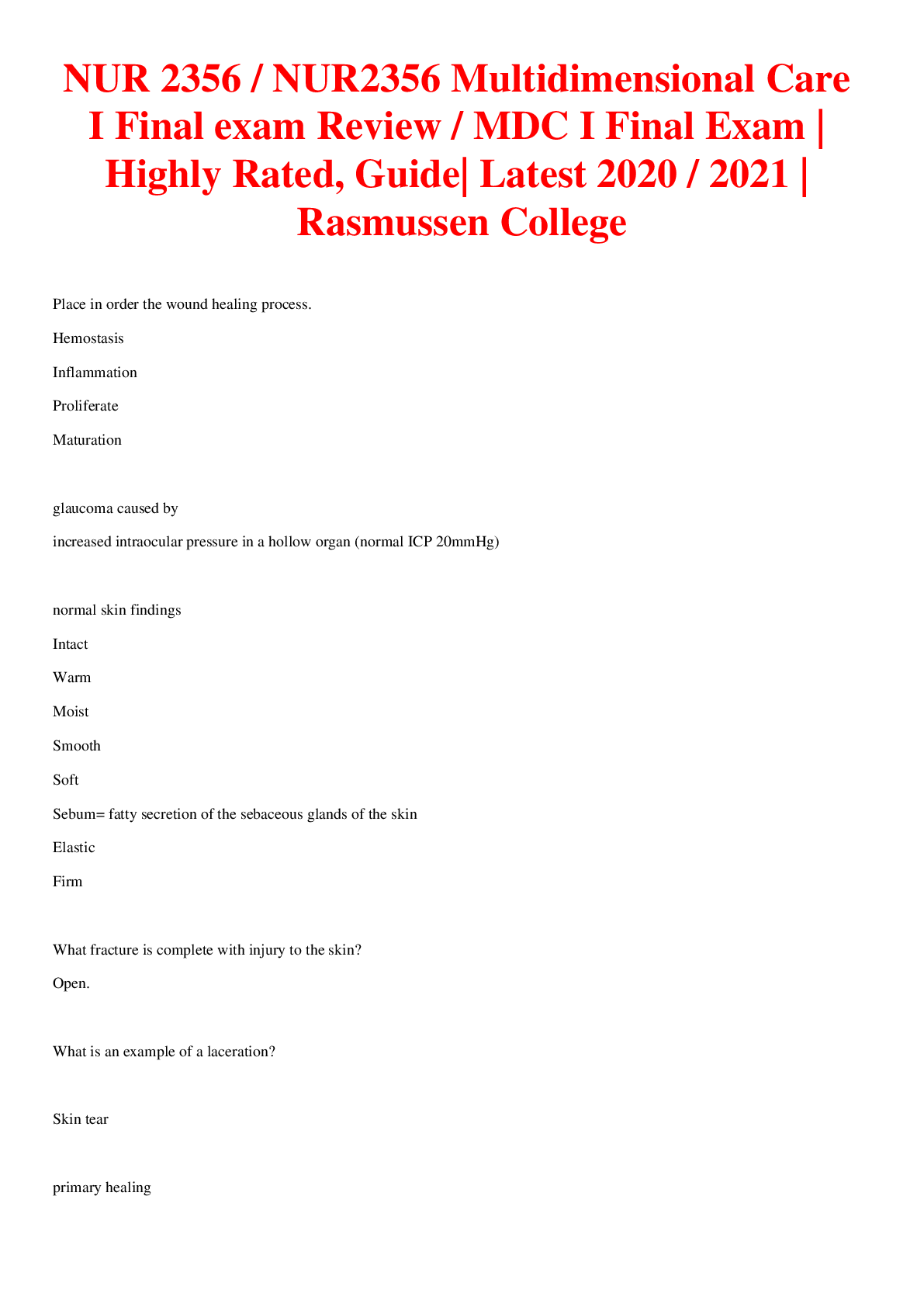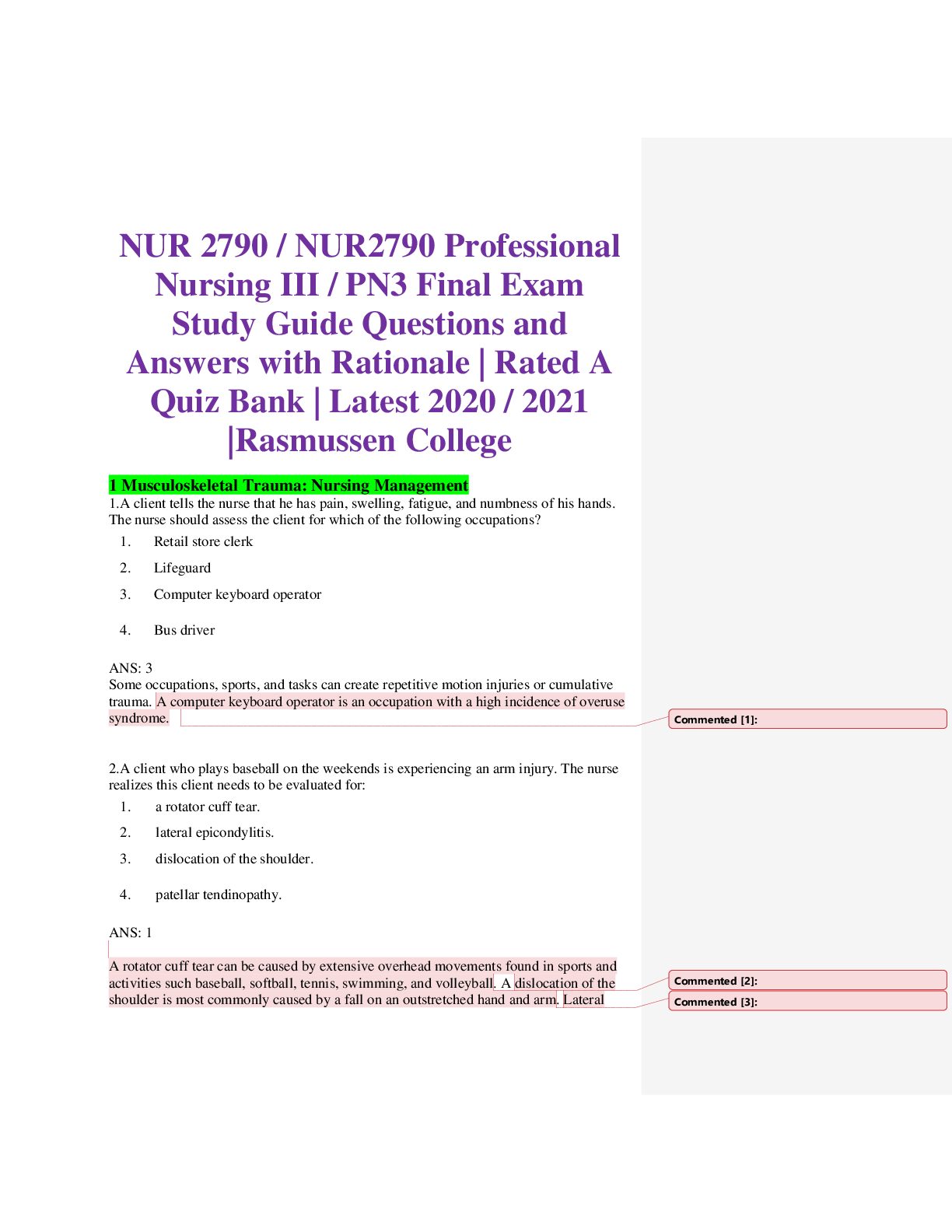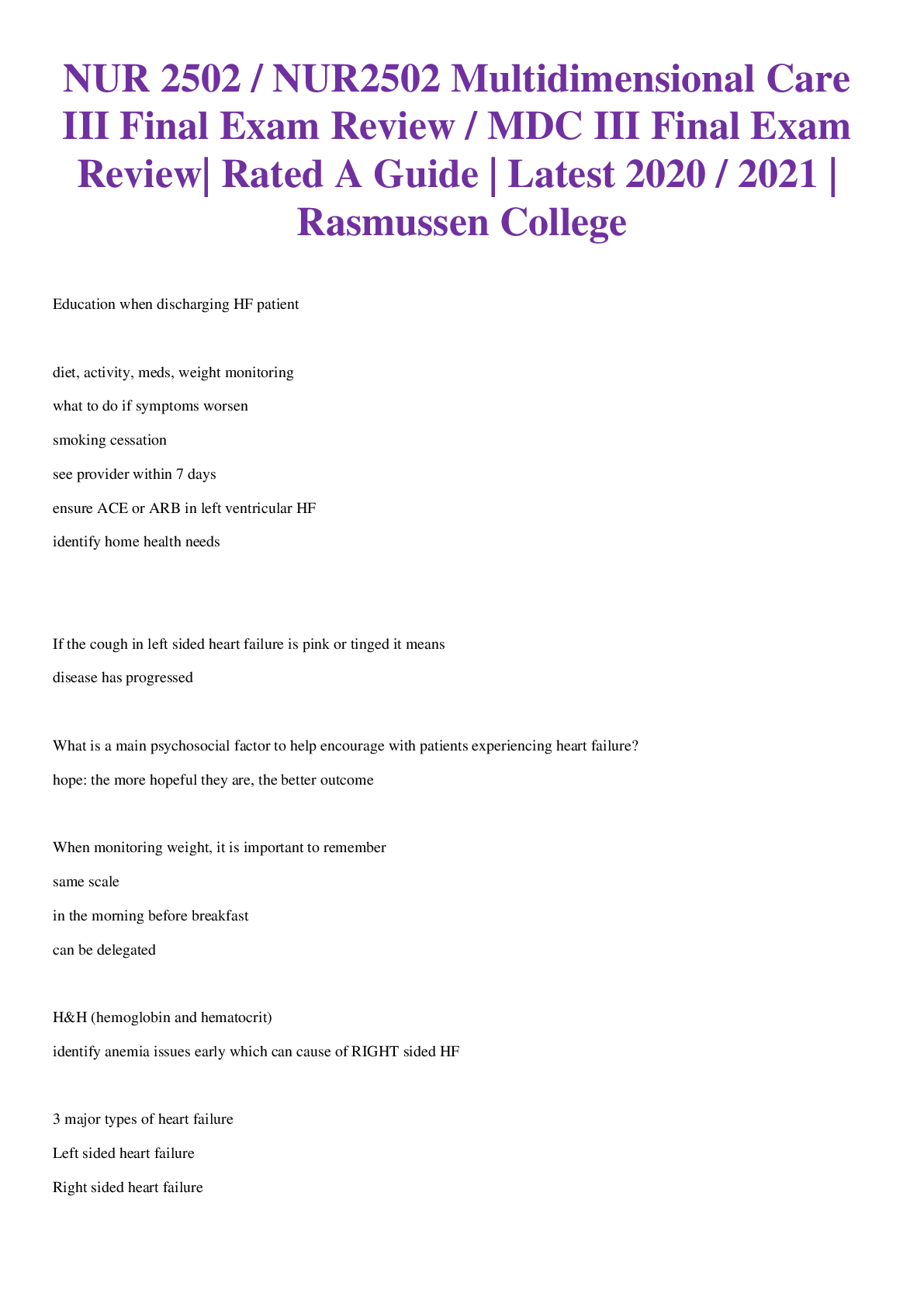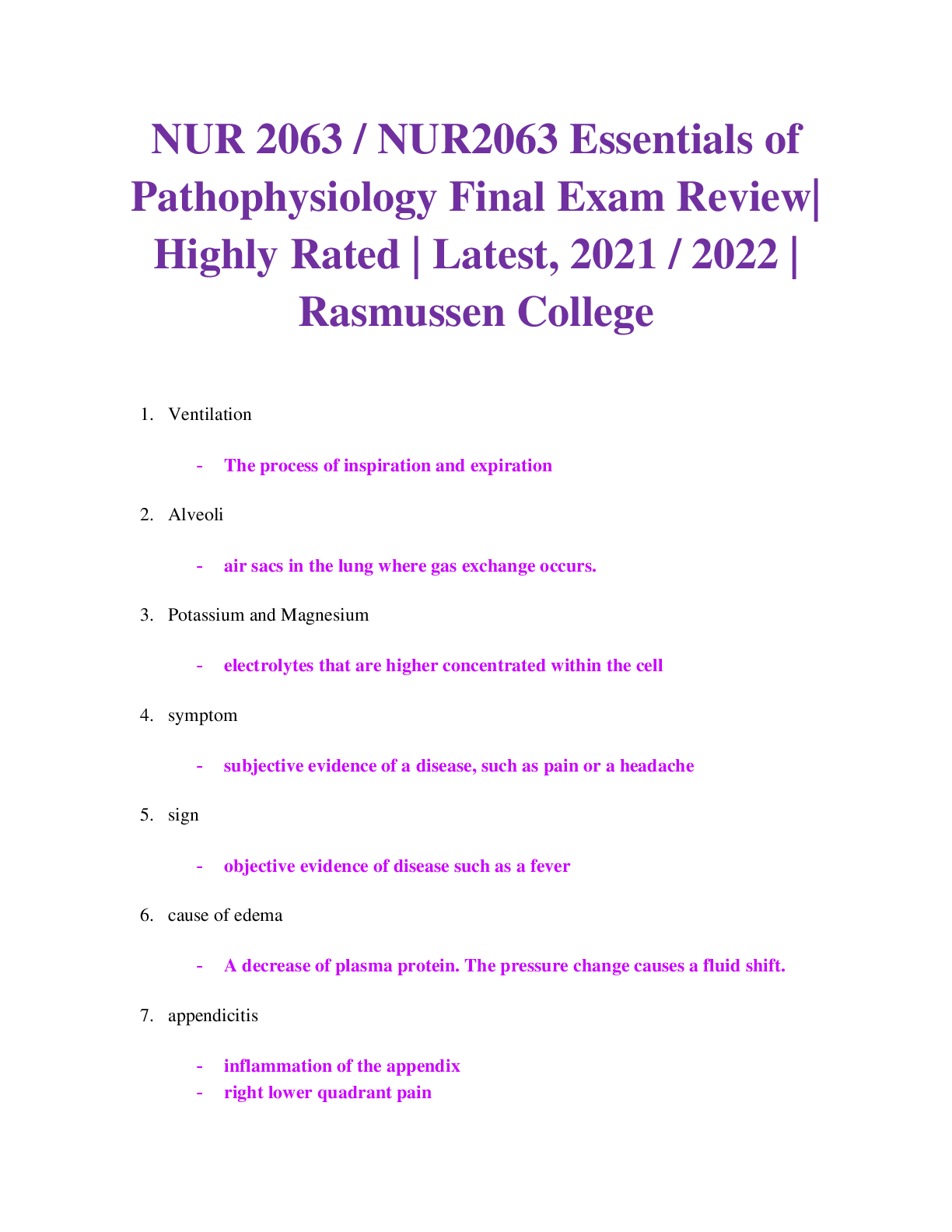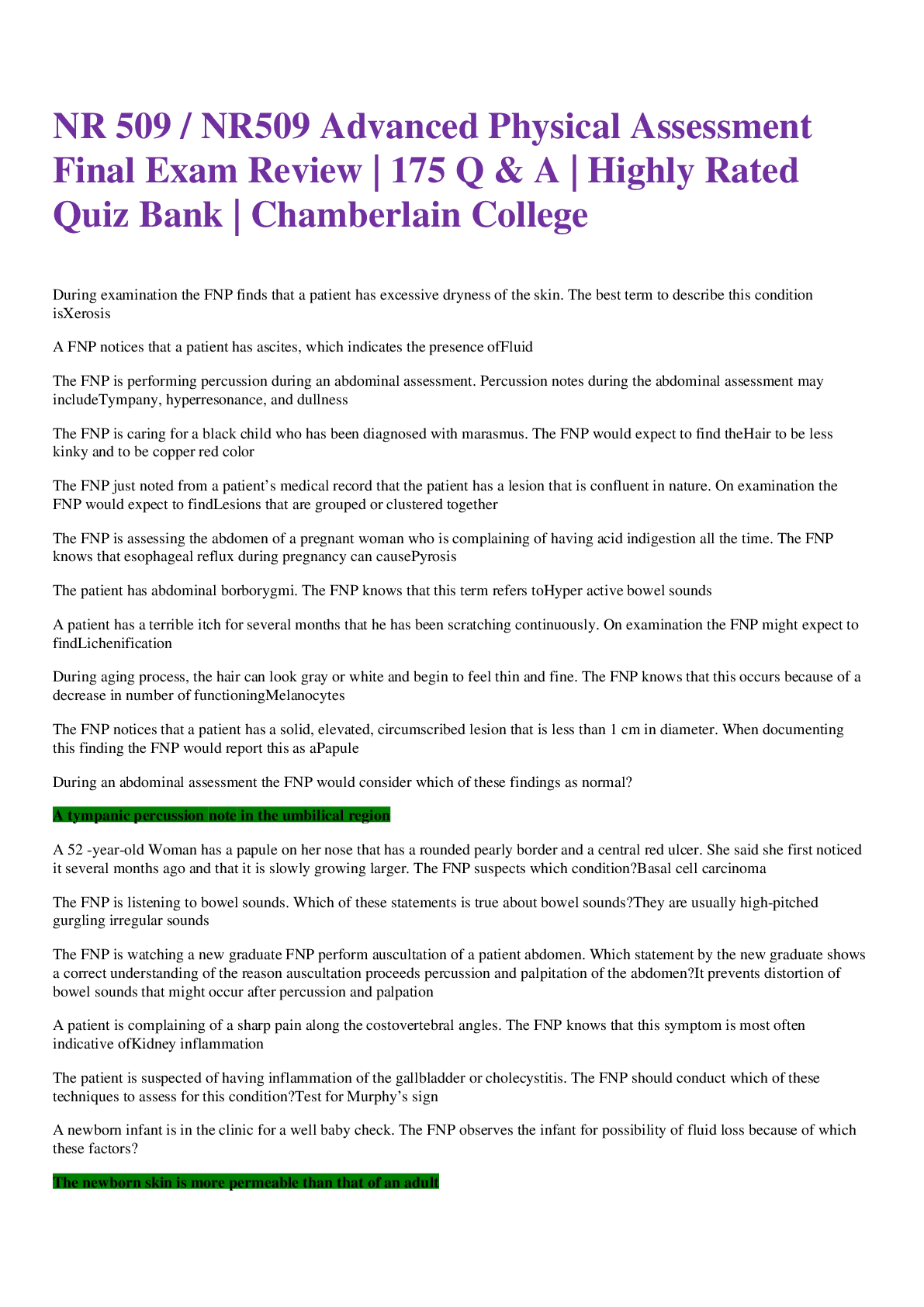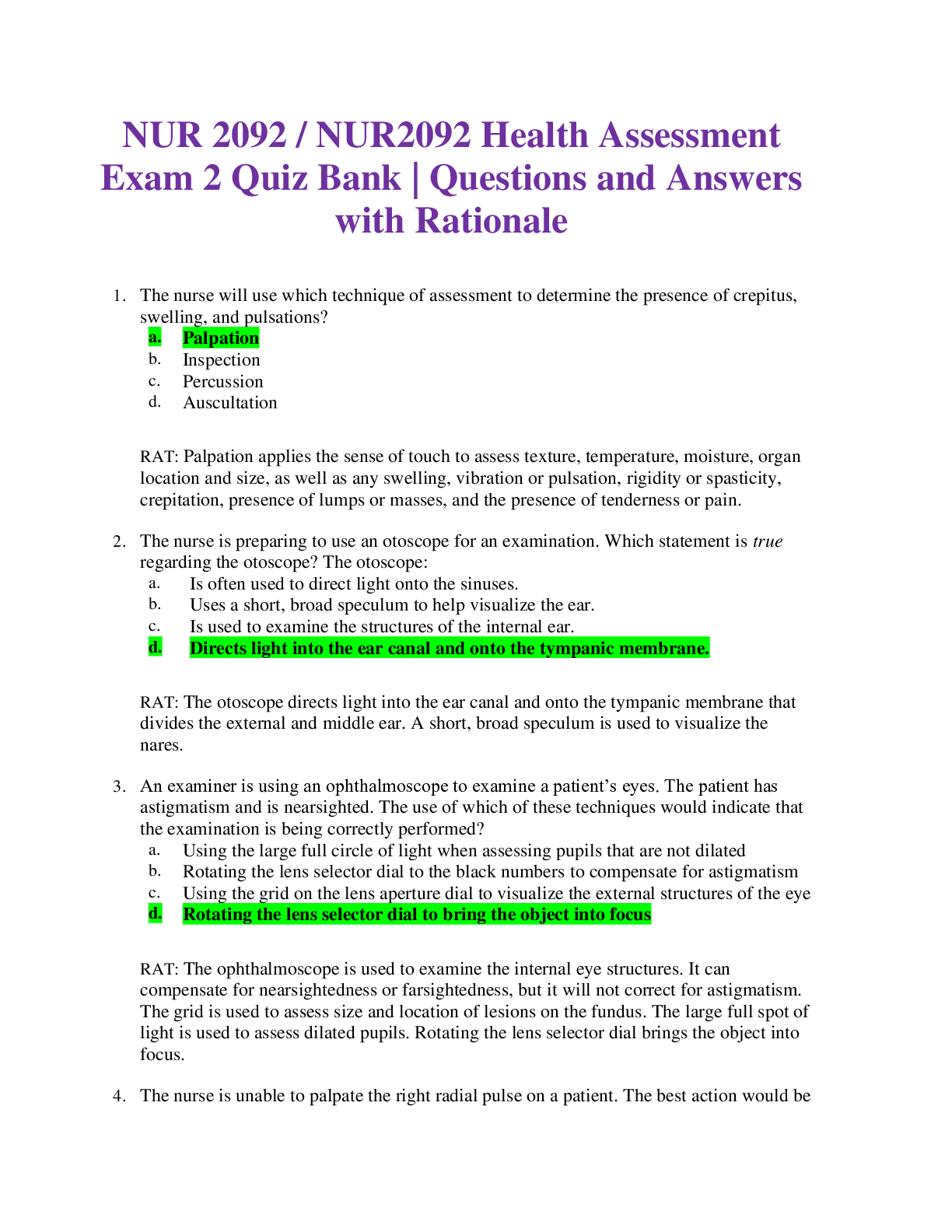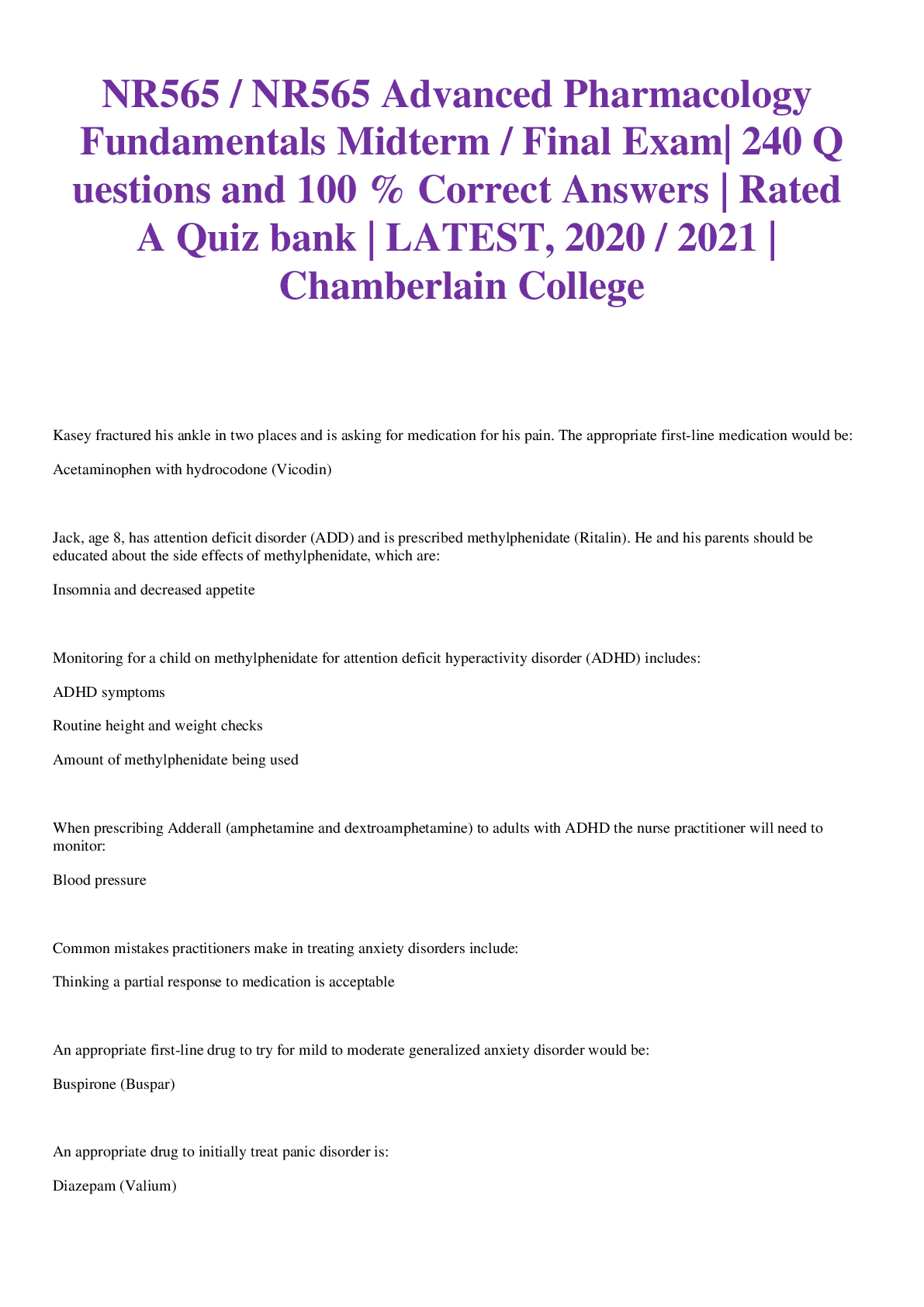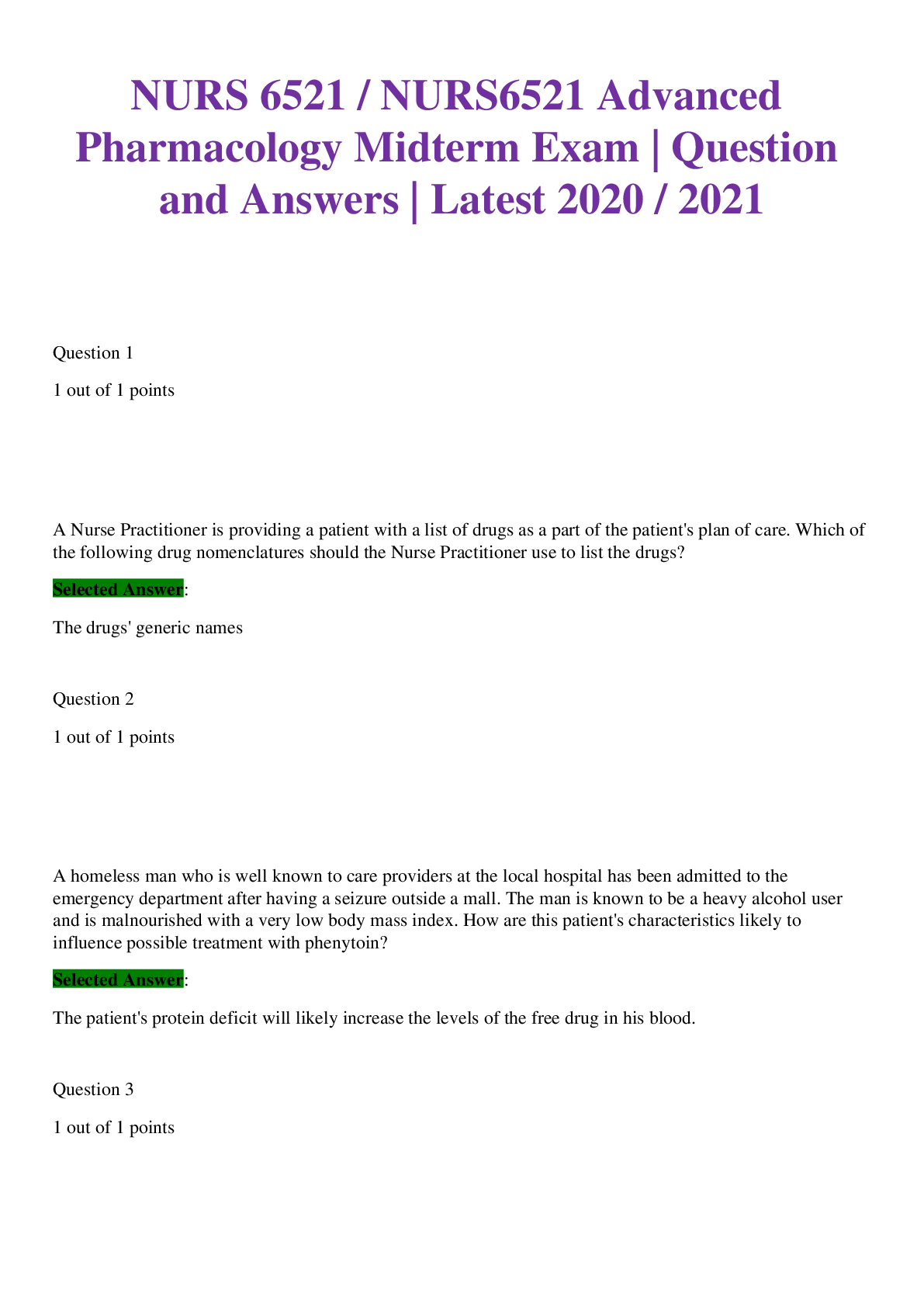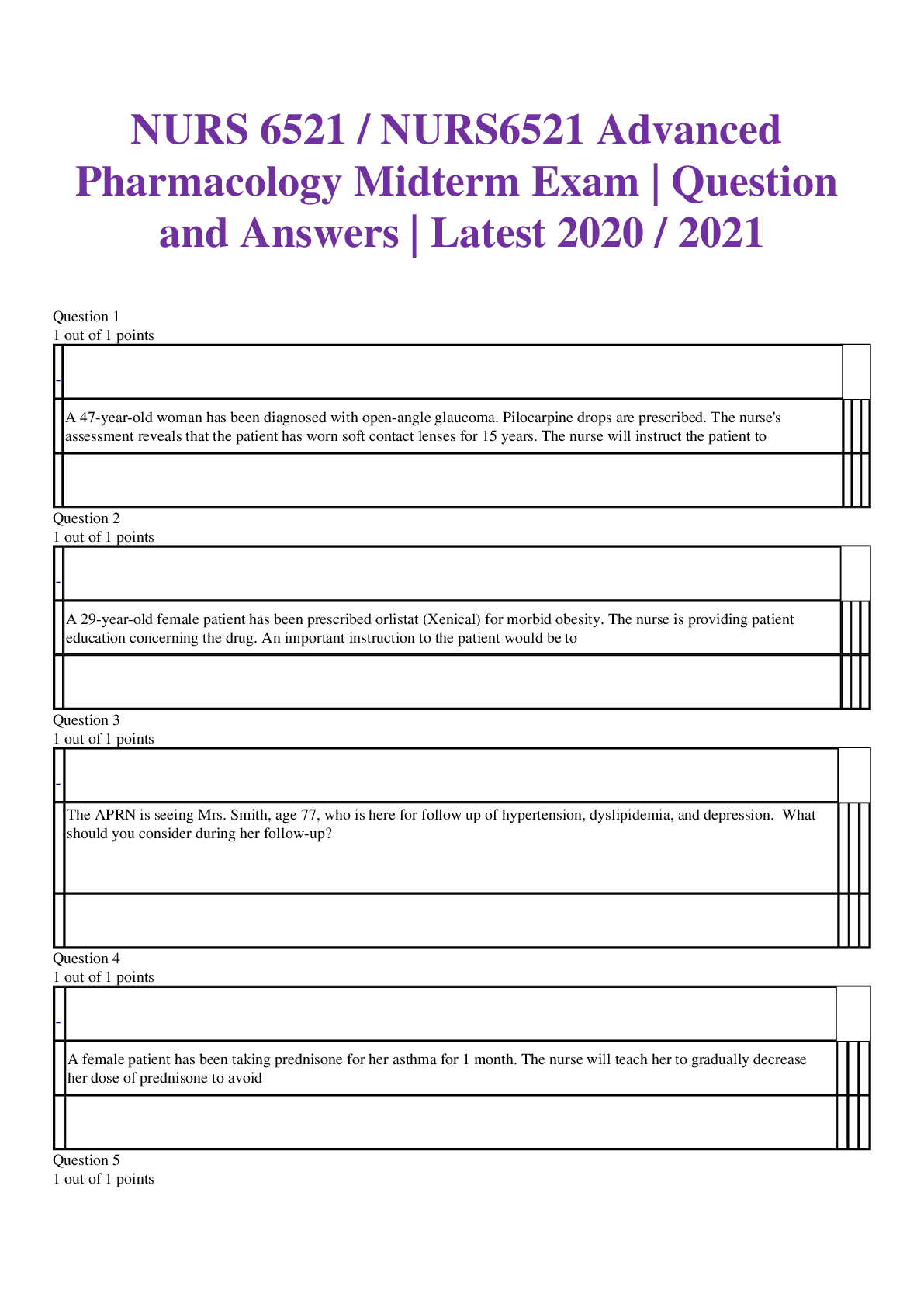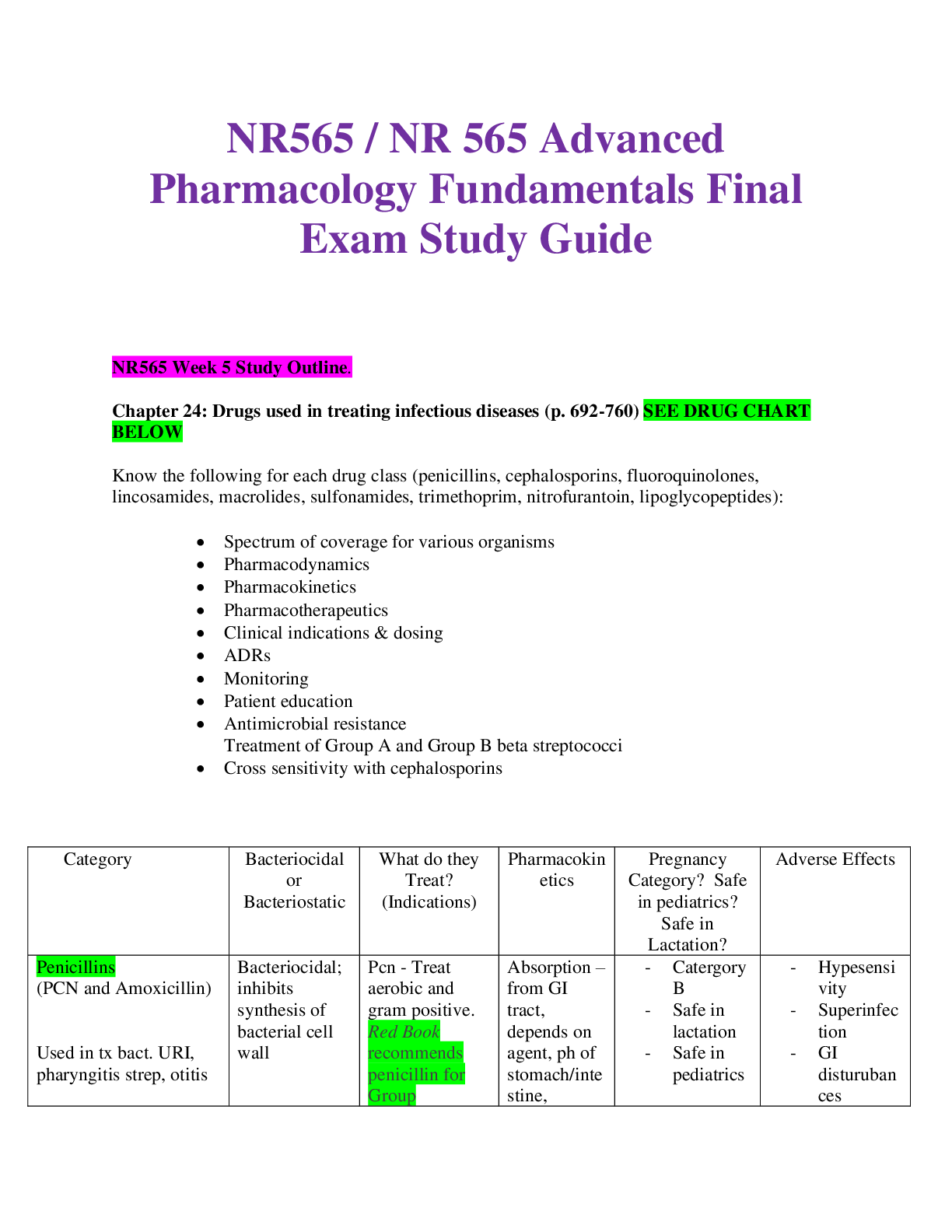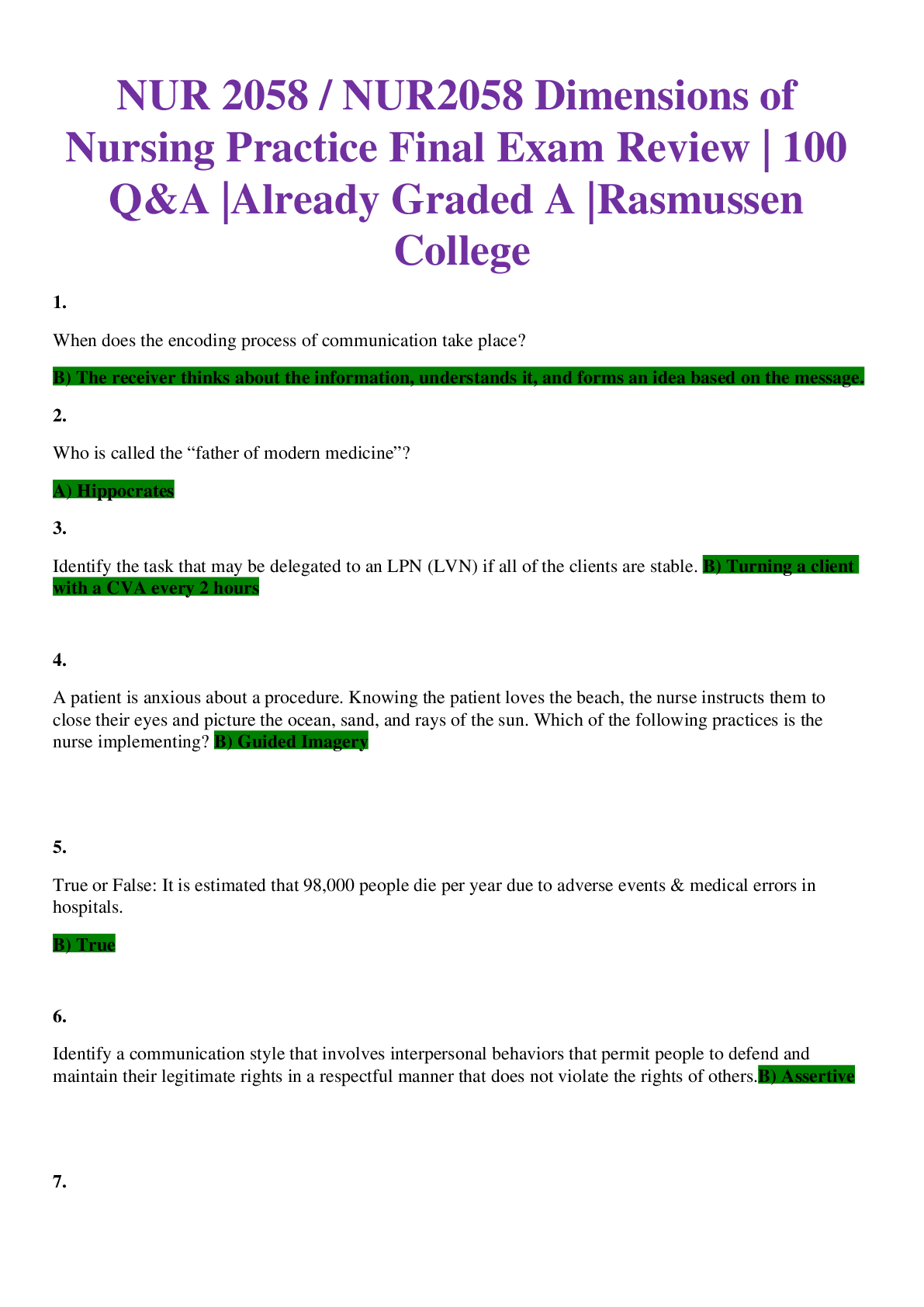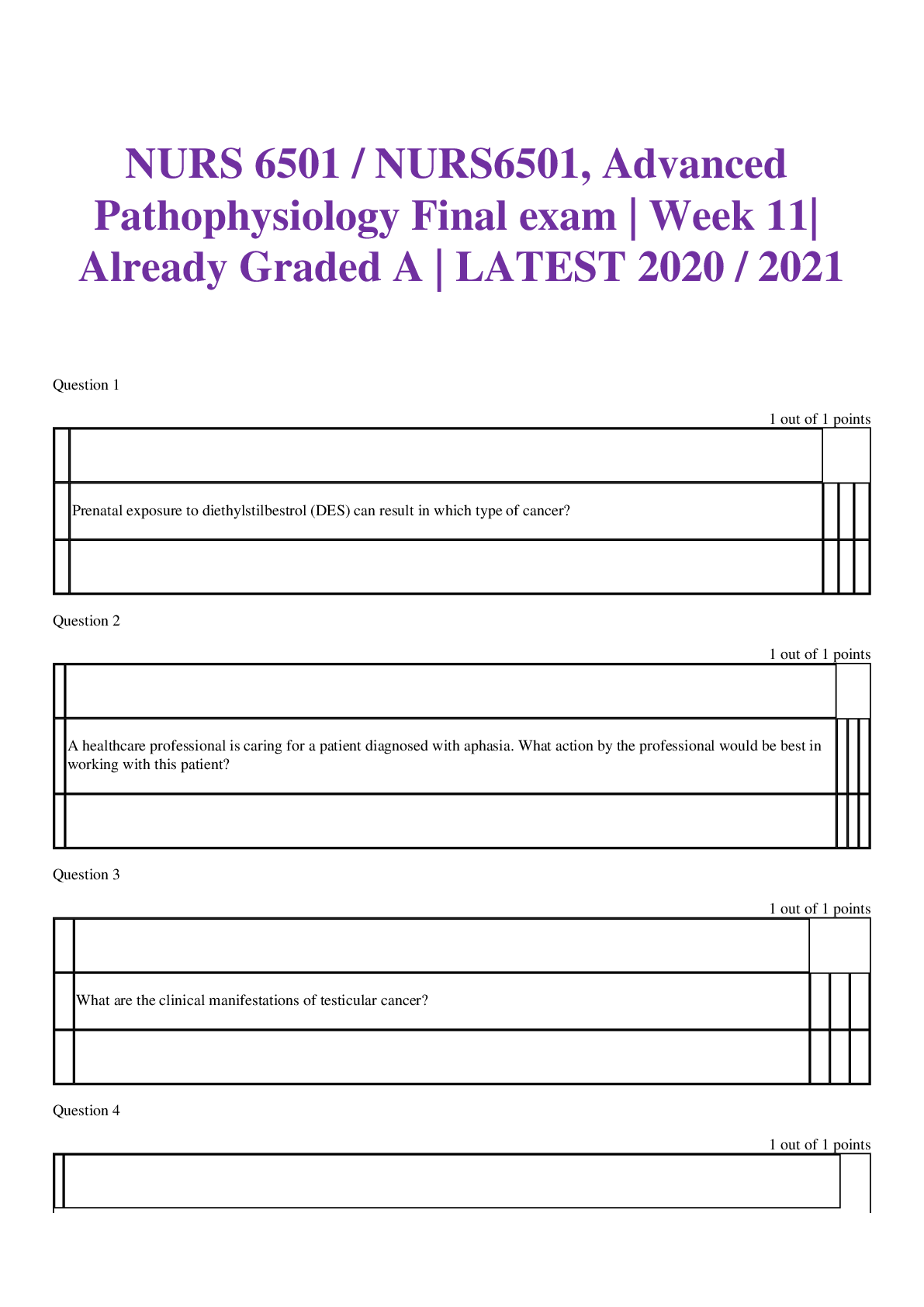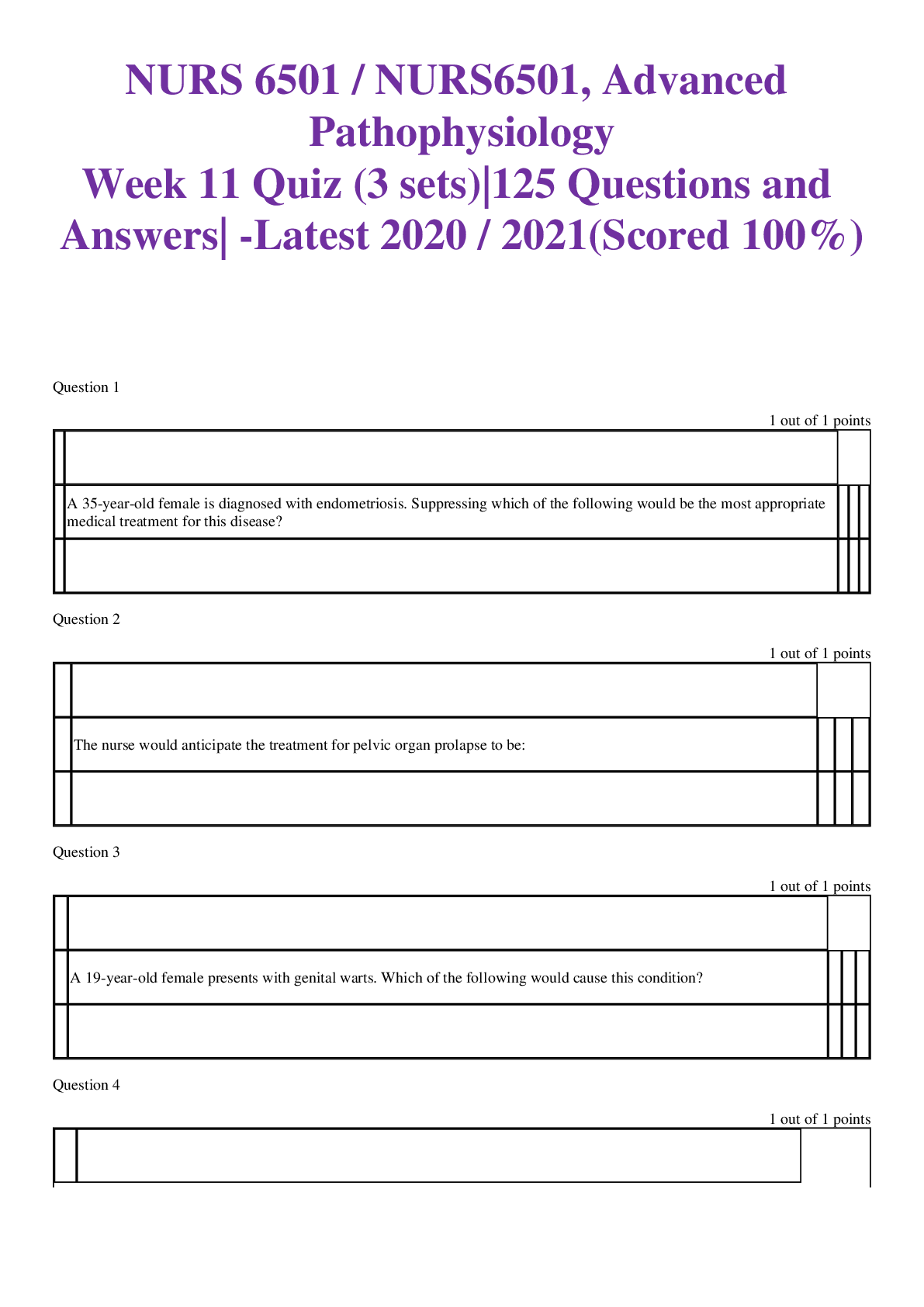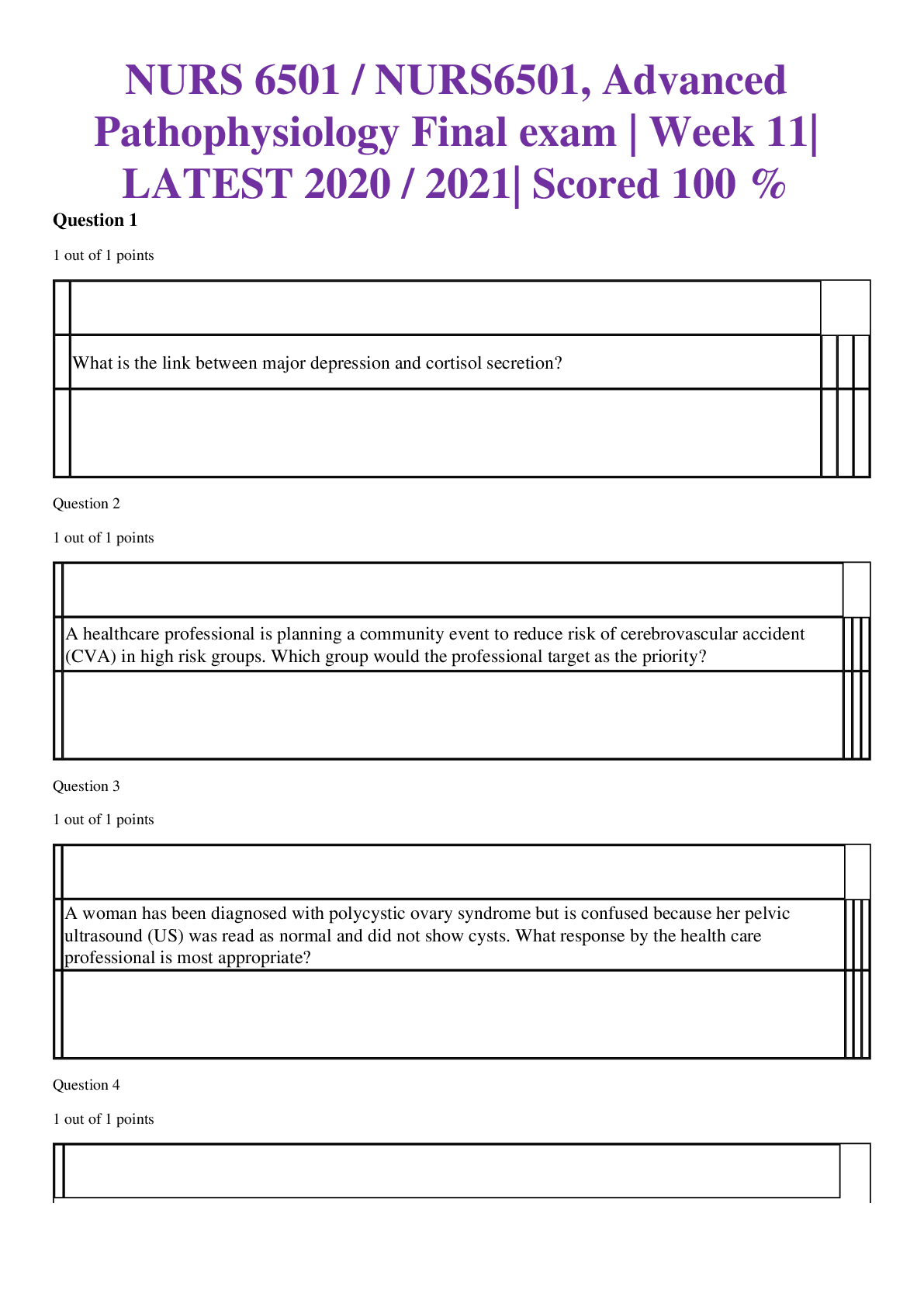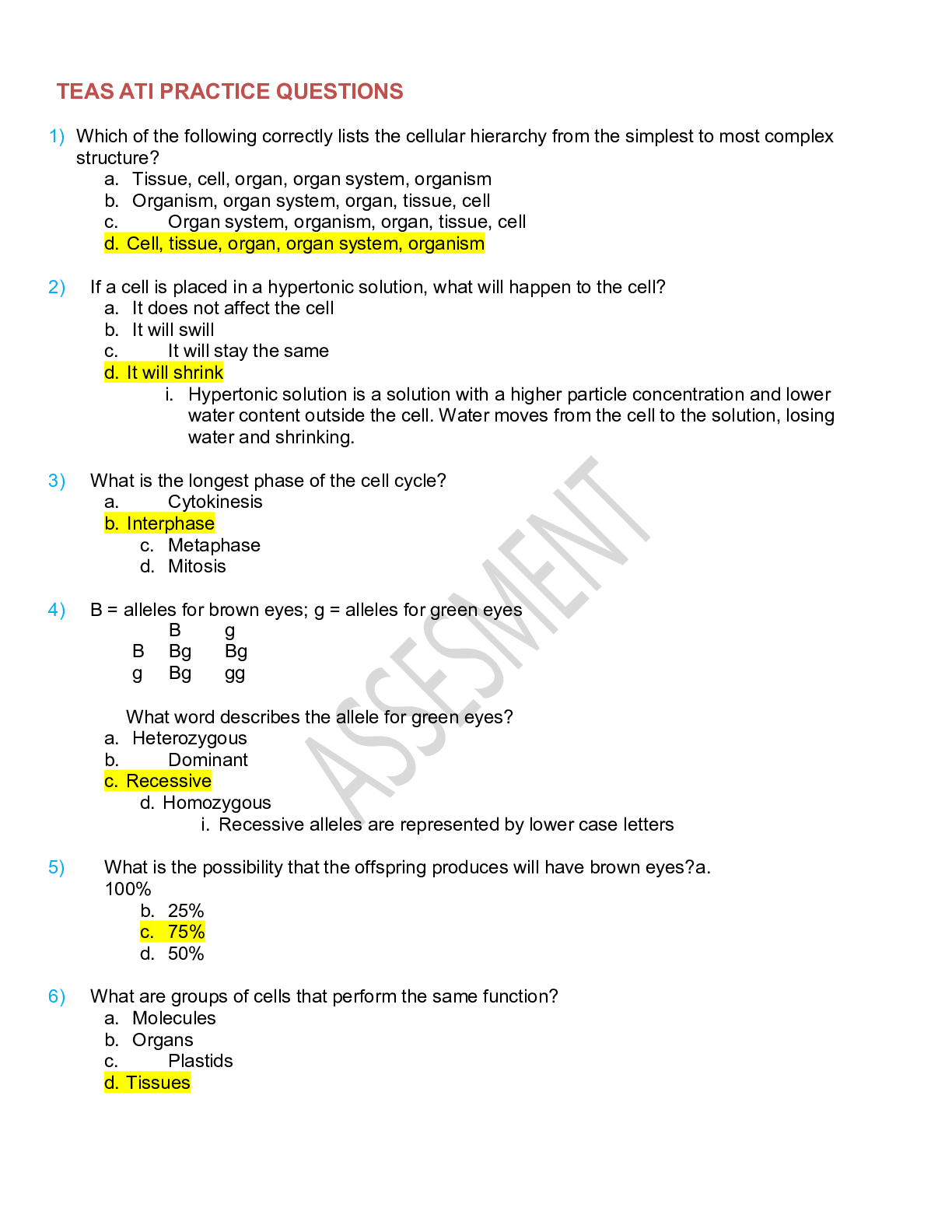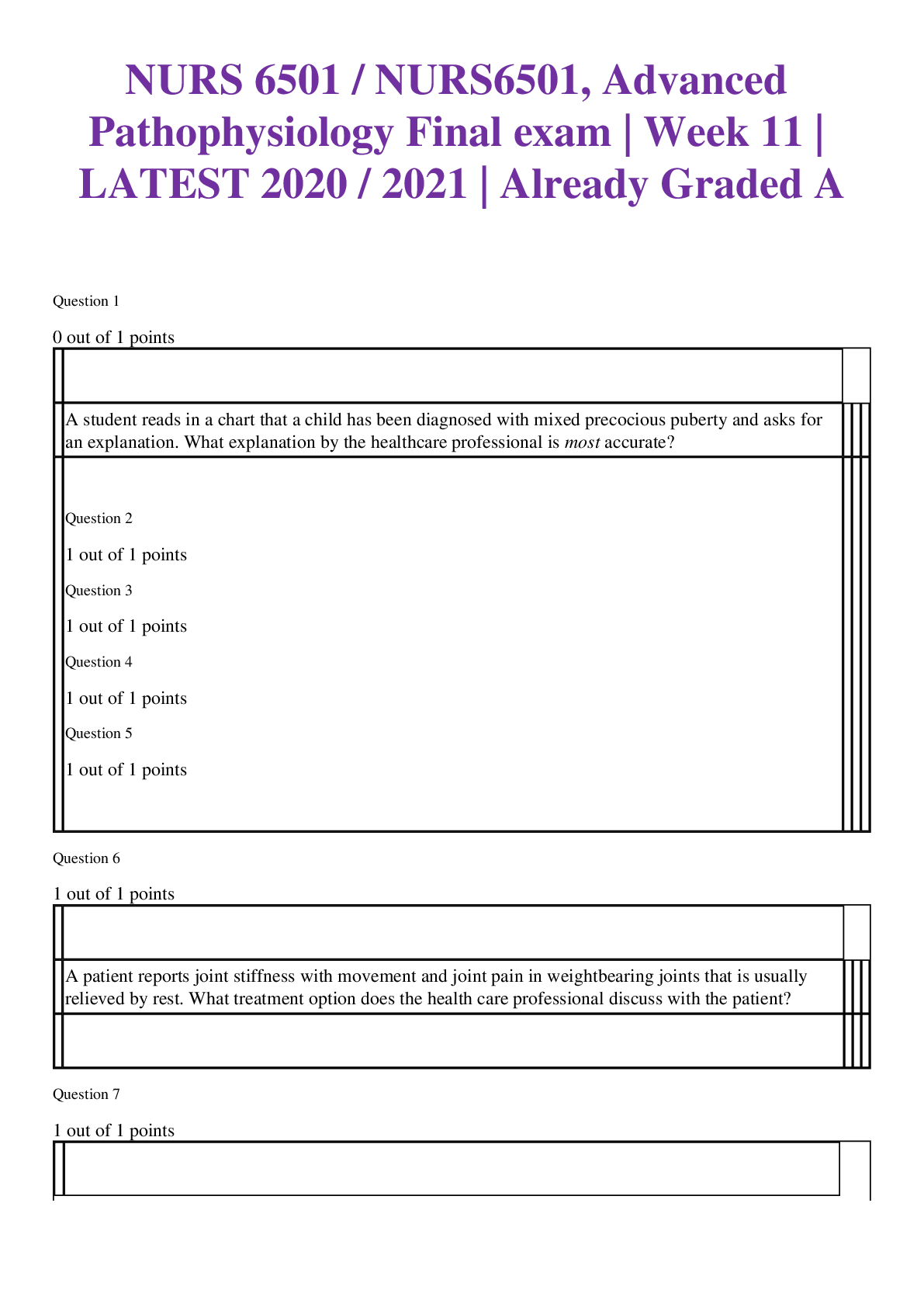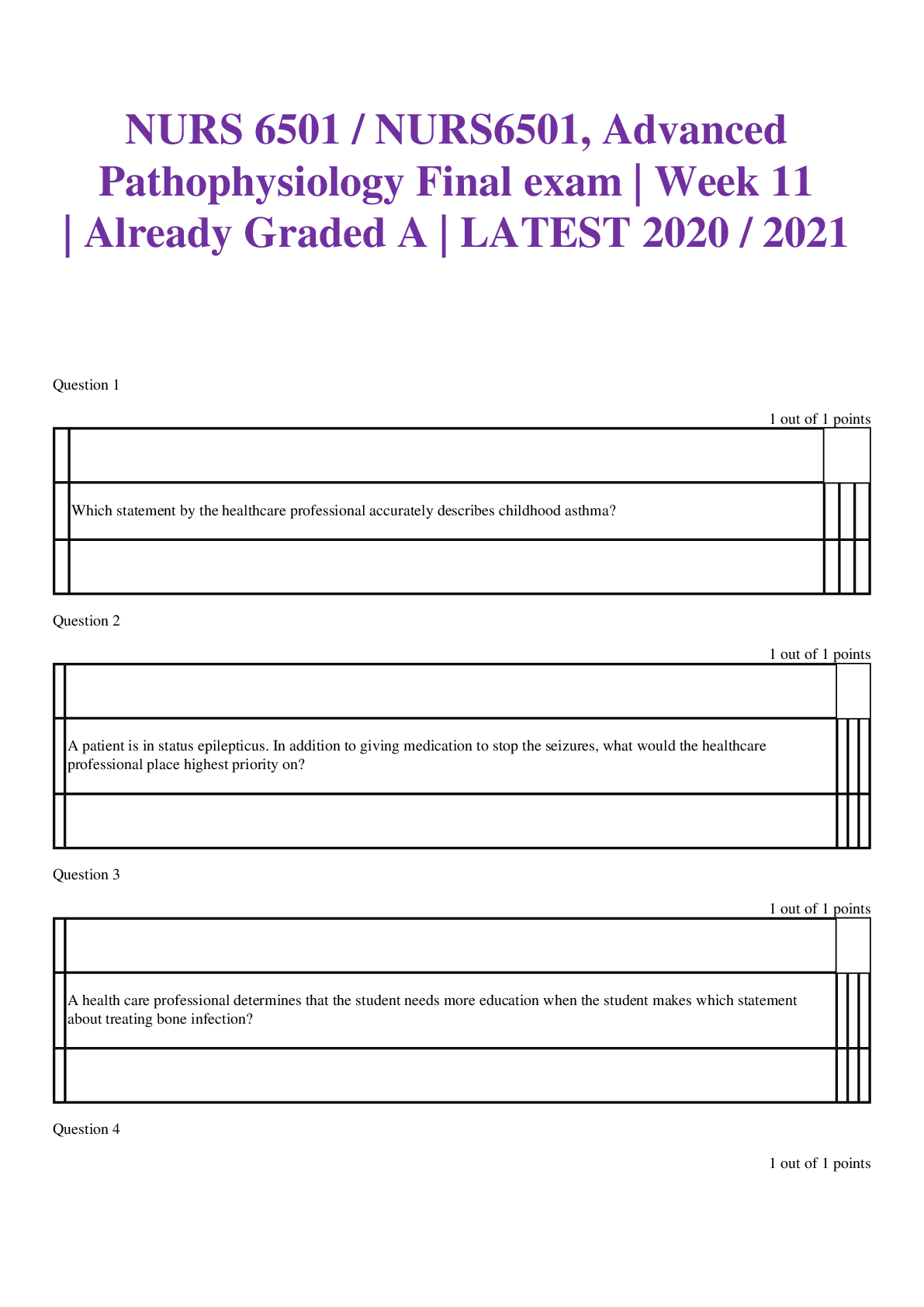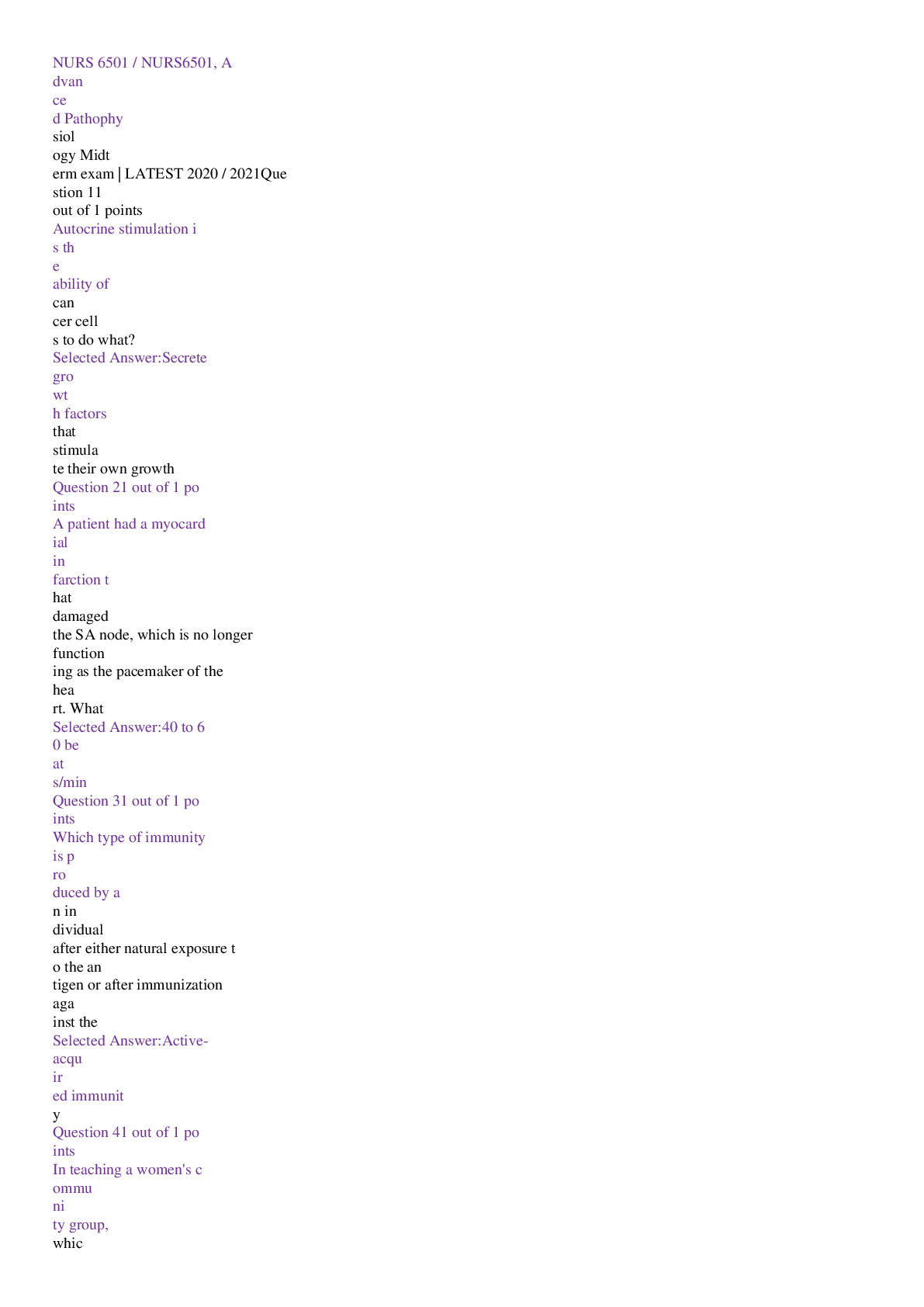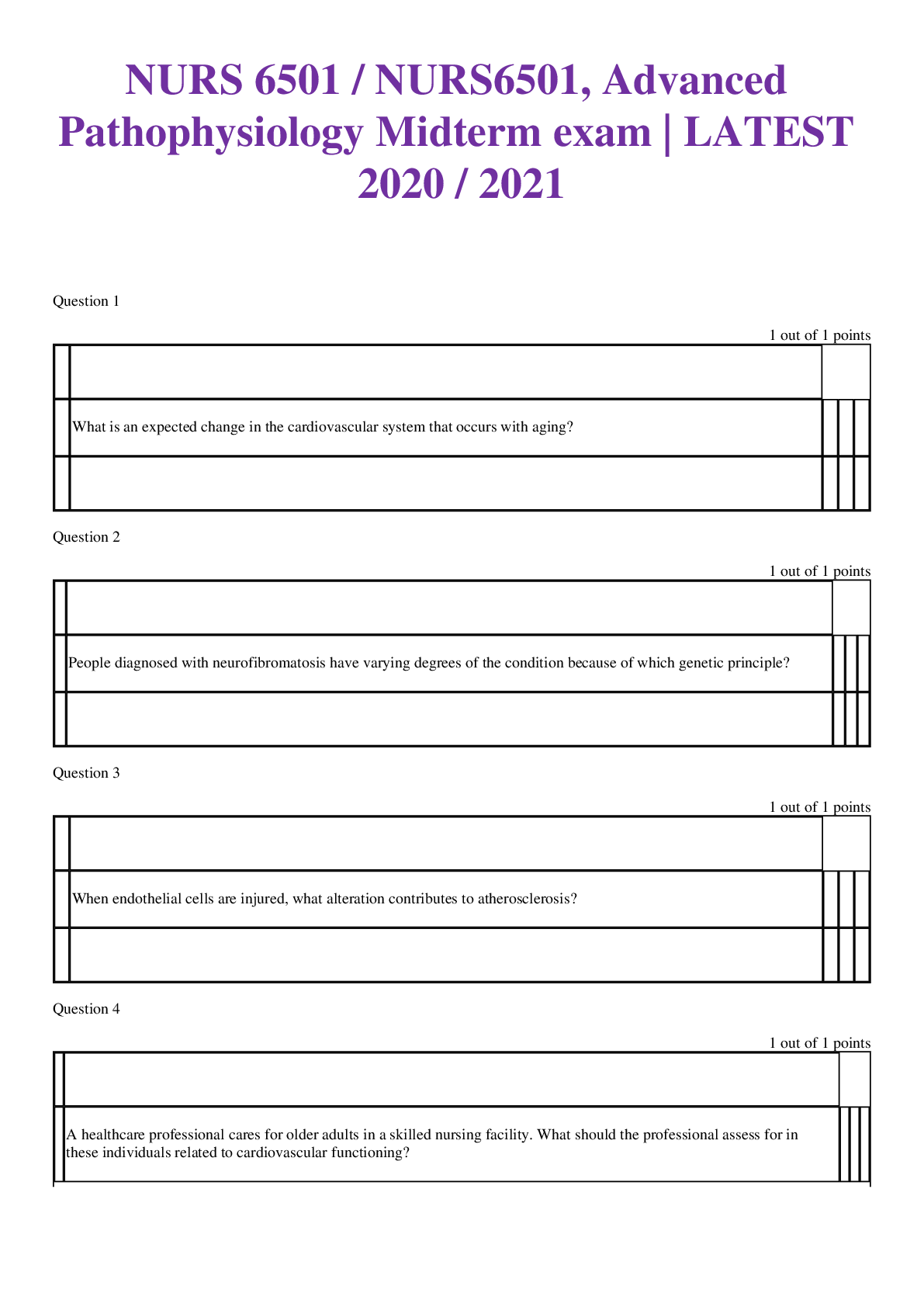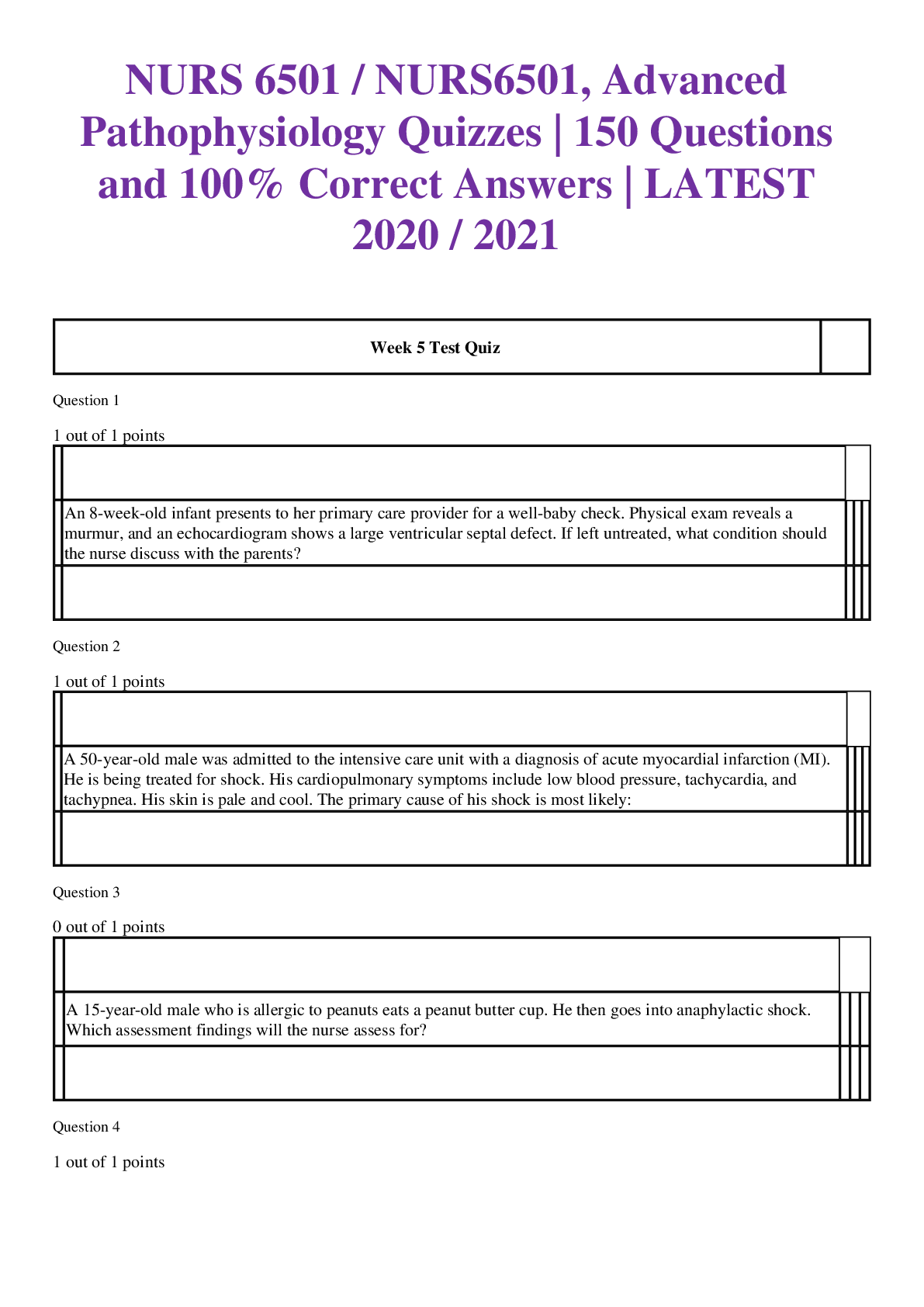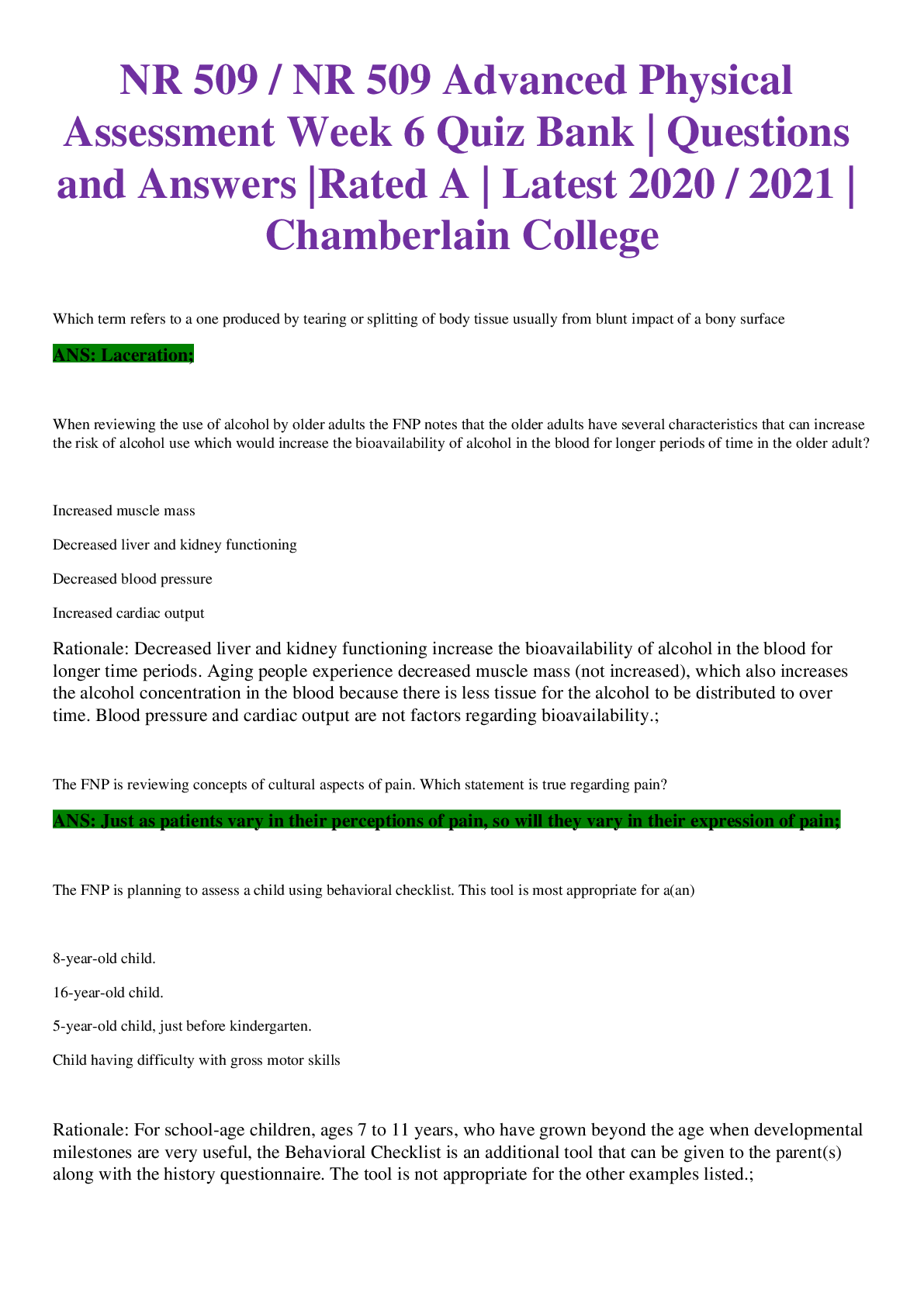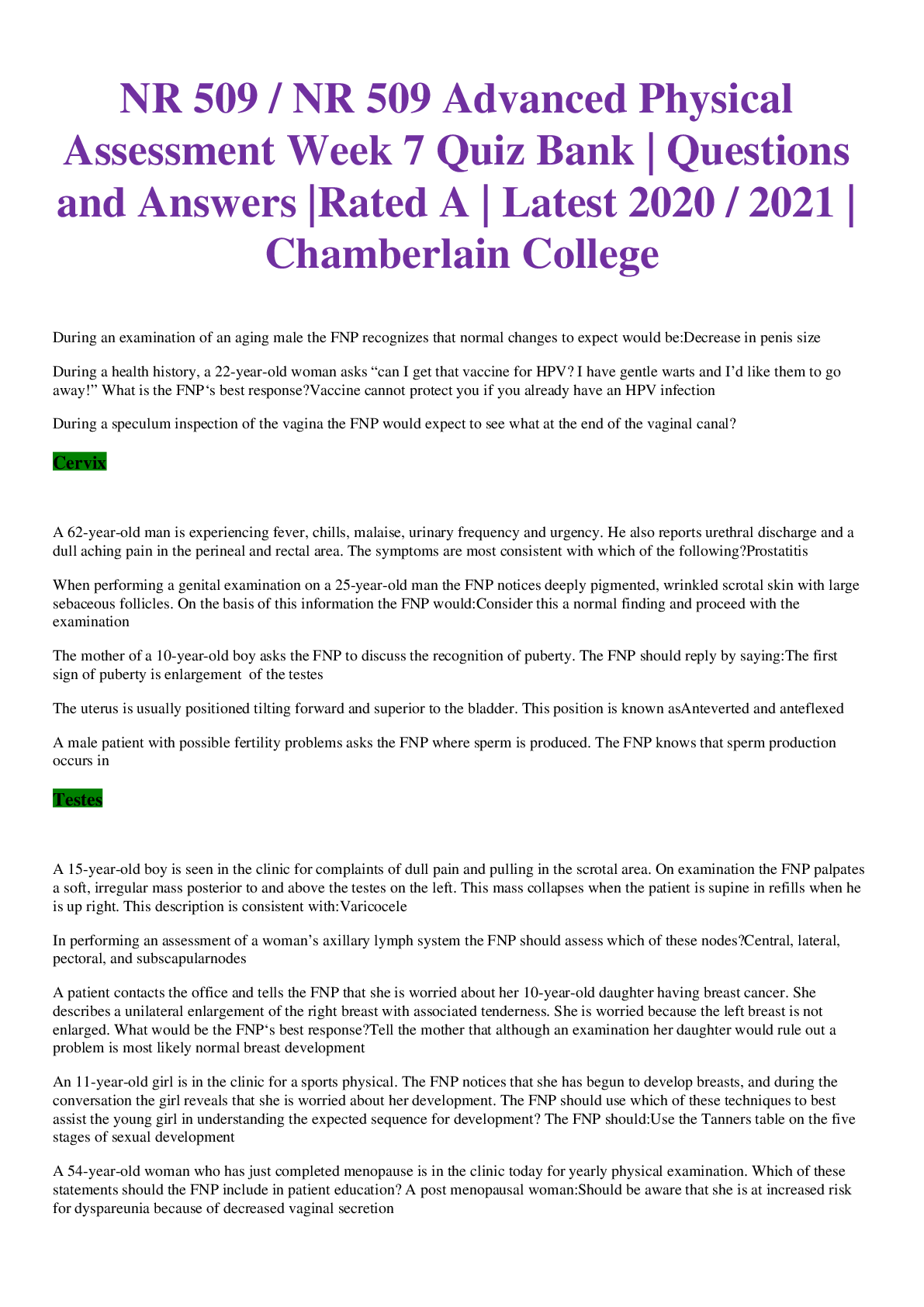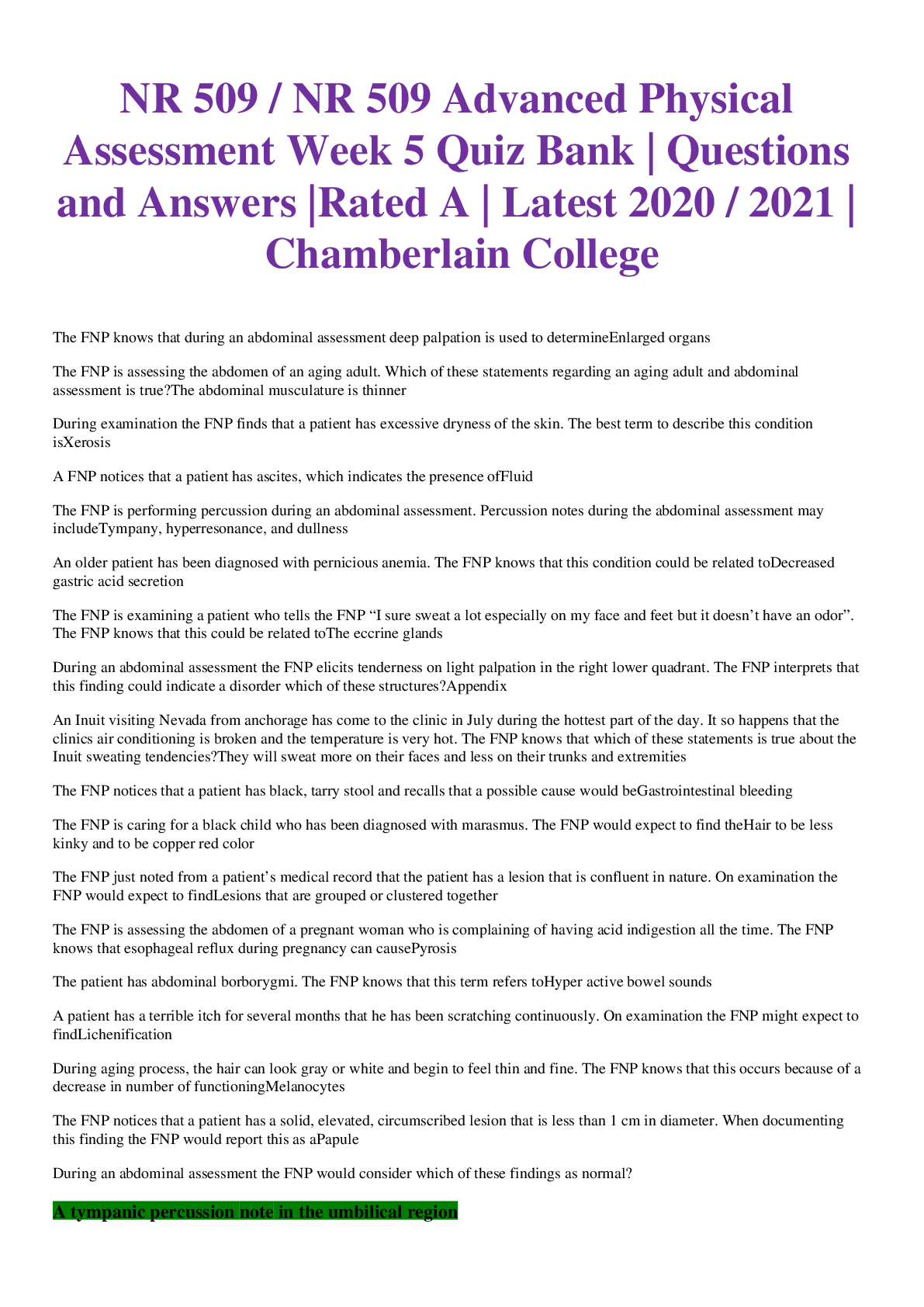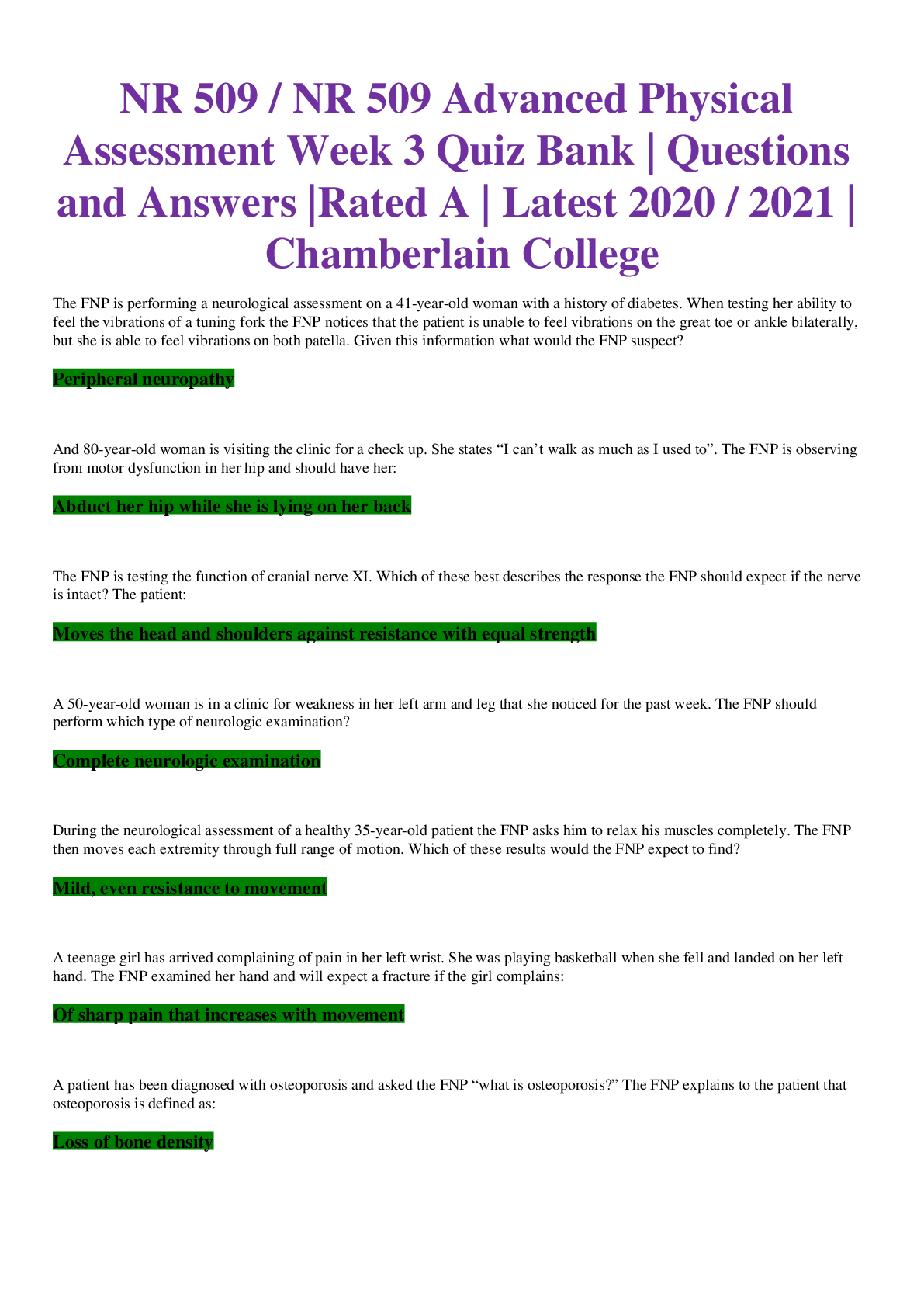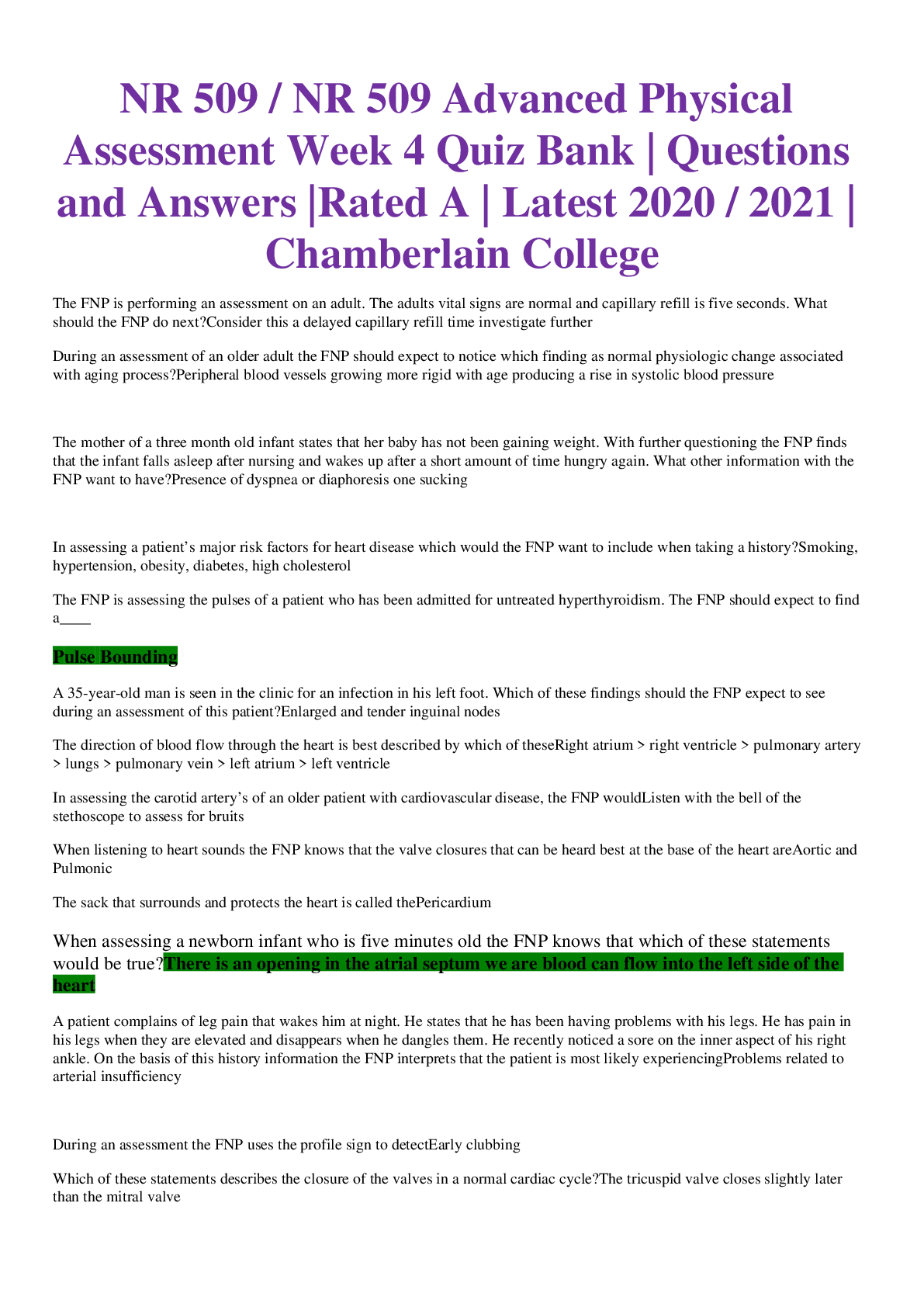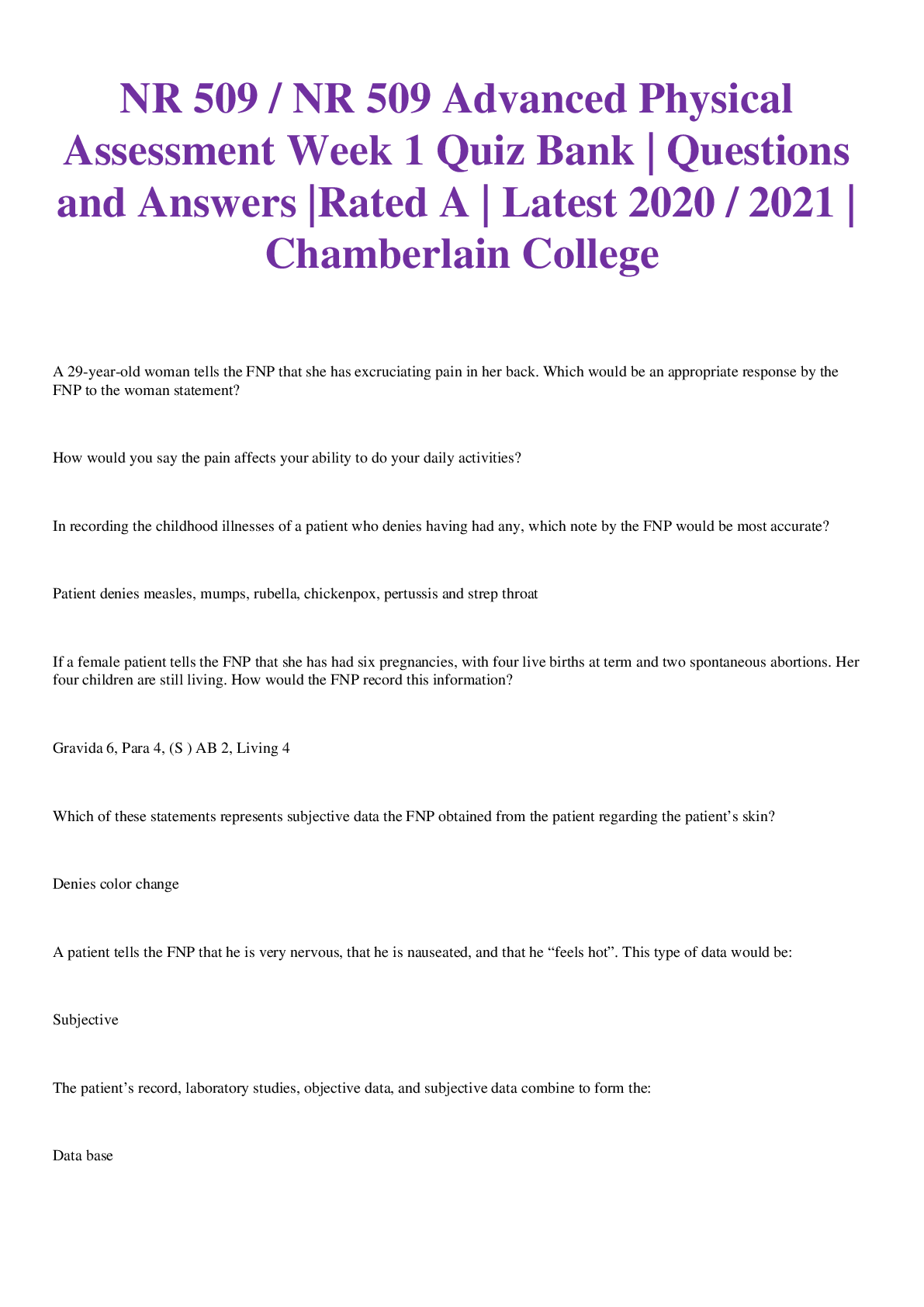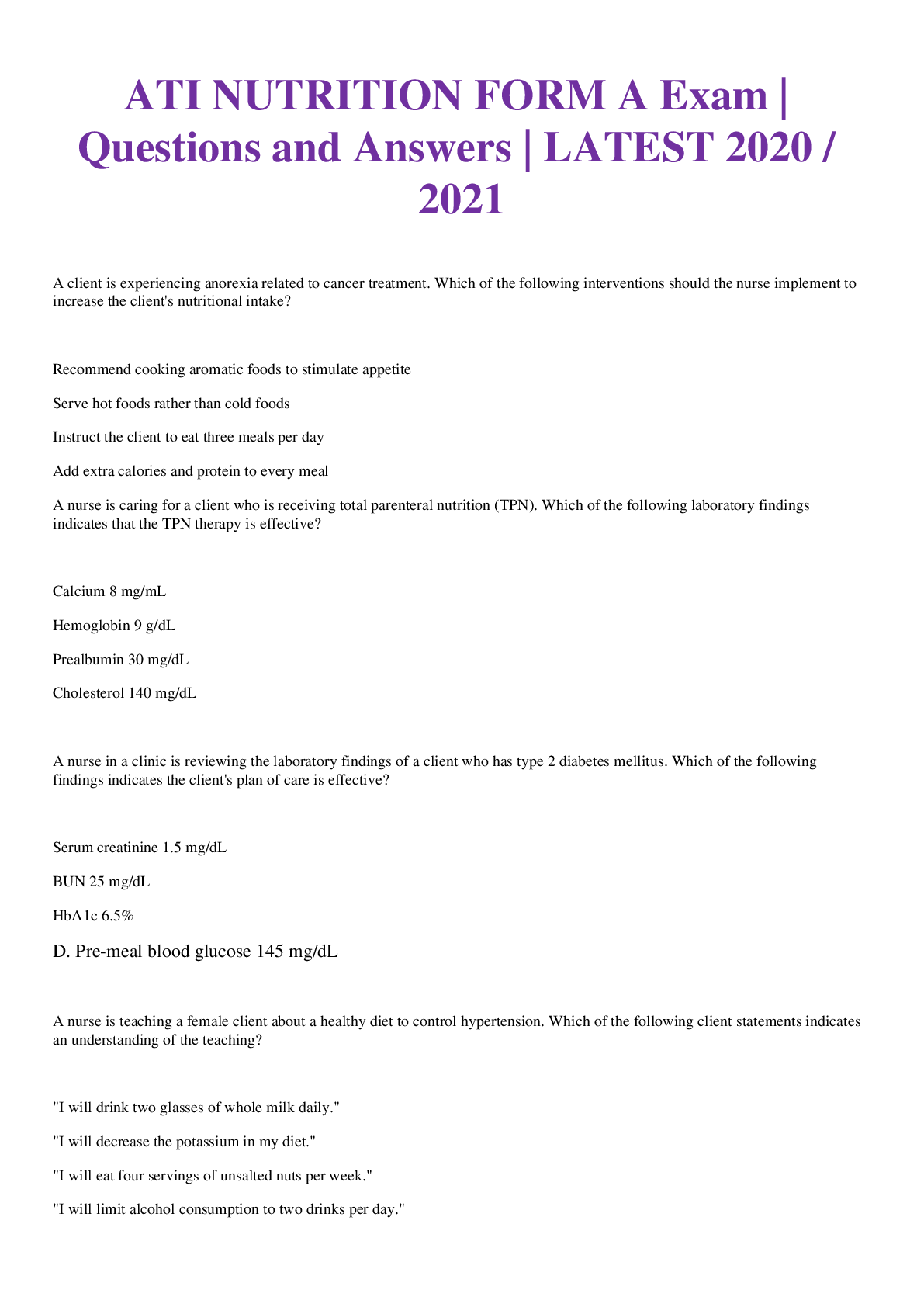*NURSING > EXAM > NRNP 6566 / NRNP6566 Advanced Care of Adults in Acute Settings I Week 4 Knowledge Check | Questions (All)
NRNP 6566 / NRNP6566 Advanced Care of Adults in Acute Settings I Week 4 Knowledge Check | Questions and Verified Answers | Latest 2020 / 2021
Document Content and Description Below
NRNP 6566 / NRNP6566 Advanced Care of Adults in Acute Settings I Week 4 Knowledge Check | Questions and Verified Answers | Latest 2020 / 2021 • Question 1 What is the mechanism of action a... nd common side effects of dobutamine, norepinephrine, labetalol, and amiodarone? Correct Answer: Drug Mechanism of Action Side Effects Dobutamine Dobutamine directly stimulates beta-1 receptors of the heart to increase myocardial contractility and stroke volume, resulting in increased cardiac output increased heart rate, increased blood pressure, ventricular ectopic activity, nervousness, headache, nausea, vomiting, palpitations, Norepinephrine It stimulates α1 and α2 adrenergic receptors to cause blood vessel contraction decreased heart rate increased blood pressure arrhythmias confusion anxiety shortness of breath headache nausea and vomiting Labetalol Labetalol is a dual alpha (α1) and beta (β1/β2) adrenergic receptor blocker and competes with other Catecholamines for binding to these sites. Decreased heart rate Shortness of breath Chest pain Swelling of feet and legs Fatigue Dizziness Amiodarone Amiodarone is a class III antiarrhythmic that works primarily by blocking potassium rectifier currents that are responsible for the repolarization of the heart during phase 3 of the cardiac action potential. See table below Organ system Amiodarone Side effects Lungs Pulmonary toxicity Pulmonary fibrosis Chronic interstitial pneumonitis Organizing pneumonia ARDS Solitary pulmonary mass Thyroid May induce hypothyroidism and/or hyperthyroidism May aggravate pre-existing thyroid conditions Liver AST/ALT > 2x normal If patients experience more than a two-fold elevation, drug therapy should be discontinued. LFTs should be monitored at baseline and every 6 months. Hepatitis and cirrhosis Heart Bradycardia and AV block Eyes Corneal micro-deposits Optic neuritis GI tract Nausea, anorexia, and constipation Skin Photosensitivity Blue discoloration CNS Various manifestations, esp. peripheral neuropathy (also ataxia, paresthesias, sleep disturbance, impaired memory, and tremor) GU tract Epididymitis and erectile dysfunction [Show More]
Last updated: 1 month ago
Preview 1 out of 4 pages
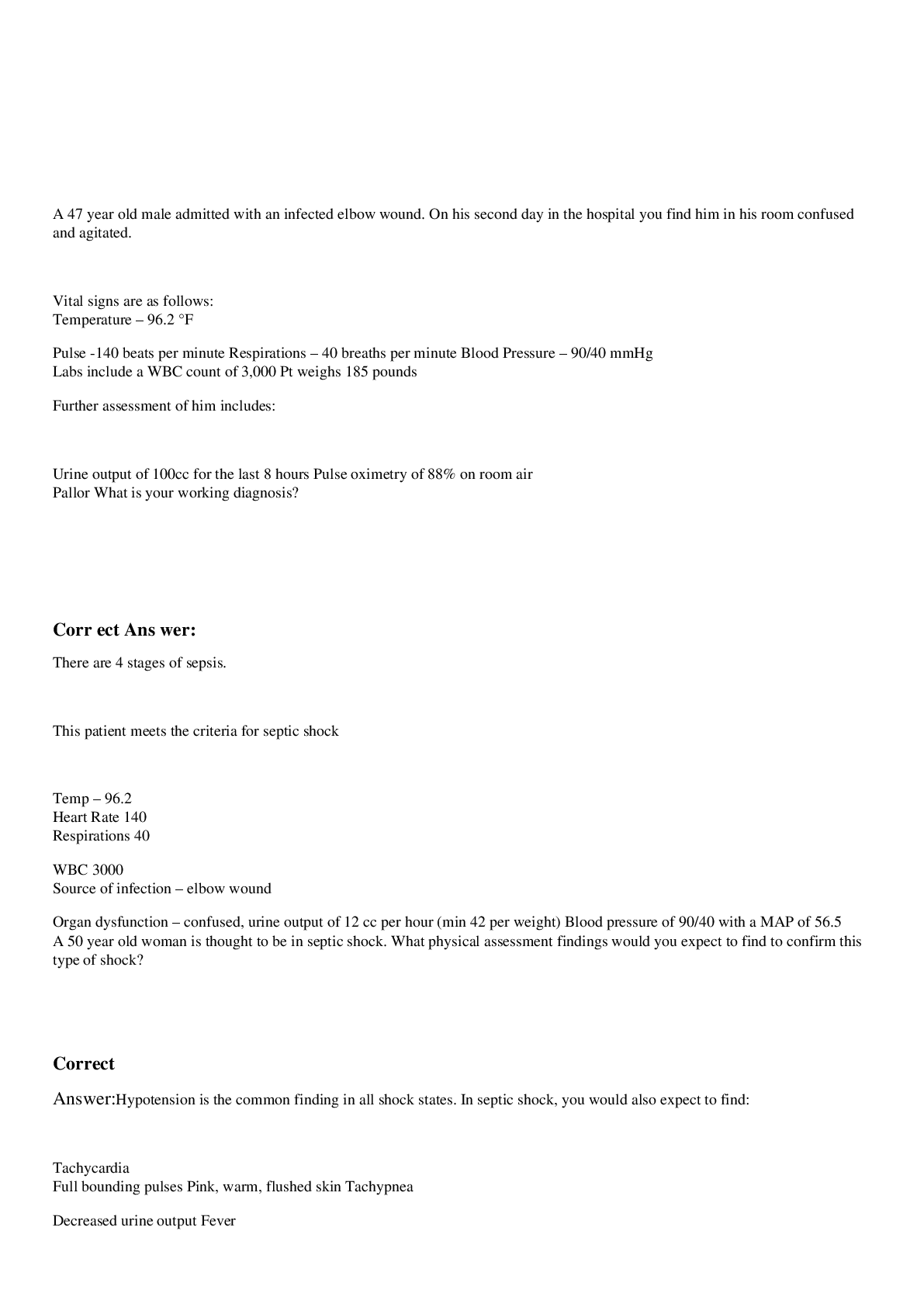
Reviews( 0 )
Document information
Connected school, study & course
About the document
Uploaded On
Dec 22, 2020
Number of pages
4
Written in
Additional information
This document has been written for:
Uploaded
Dec 22, 2020
Downloads
0
Views
70

